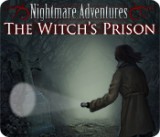Review for Dead Drop – A Carol Reed Mystery
__big.jpg)
The Carol Reed series of adventure games has been an ongoing affair since - rather impressively - 2004. Through her previous episodes the eponymous British detective has been helping the good folk of Sweden (where she lives) to solve mysteries involving murder, assassination, missing persons, suicide, even the Covid pandemic.
In her 19th adventure from MDNA Games, Dead Drop, Carol has been hired by a man named Erik for assistance with an information gathering side job he has become somewhat too deeply involved in. His anonymous client initially asked for fairly innocuous information about the government department Erik works for, and in need of extra money he decided to take the job. However, the client’s requests have gradually become rather too risky for Erik to continue, so he has had to enlist Carol’s help in order to get himself out of this difficult and potentially dangerous situation.
As Carol delves deeper into Erik’s case, in effect taking on this mysterious unwanted job for him, it transpires that there is much more going on than is apparent on the surface. There are links opened back into Sweden’s past, involving missing artworks and ties with Russian agents. There’s also a cast of mysterious individuals, both living and dead, whose secret tasks, unfinished for decades, have left an emotional toll in the present.
What struck me on first starting the game was how easily I became immersed in Carol’s world. This is in part thanks to the simple mouse-controlled user interface. It is streamlined and logical, with minimal icons. The only control I did not appreciate was the dual use of a right click to both replace currently-held objects and to go to the main menu, as using a trackpad I frequently found myself suddenly on the main menu by mistake. This quibble aside, the interface works well and keeps out of the way of the visuals to enable you to fully enjoy the scenery.
The story of Dead Drop is driven by puzzle solving, and is somewhat linear in progression. Nothing really changes in the game until the current challenge has been overcome. Solving a puzzle will generally reveal a note or an item which opens up another location on the map of Norrköping (the real Swedish town which is used as the setting), or cause your phone to ring with a new lead from one of the many side characters.
You frequently have to pay a visit to these side characters to ask for their help, as well as to assist them in exchange for information. They are an interesting-looking collection of people (if weighted towards the older white male side of the populace) but some of the things they ask you to do will occasionally have you scratching your head and wondering why. Giving fake urine samples, hiding birthday presents in the woods for an unimaginative dad, or measuring railway station screens for a lazy tech store guy, for example. Some of these character-assigned puzzles struck me as what could be termed “busywork”, making the player toil a little too literally in exchange for assistance.
For the most part however, the puzzles are inventory based and I found them to be good fun, if a little unoriginal. There are a large number of simple button-pressing and code-finding games, locked cupboards to open and hidey-holes to uncover. Completing the puzzles will often progress the story in unexpected ways and there is almost never a moment where you are not wondering what will happen next.
I considered the difficulty level to be firmly on the harder side of “easy”, with one or two exceptions. In Erik’s father Oblav’s cabin, for example, there is an enormous amount of junk piled up, and where the background images become more detailed or filled with extraneous items, the trickier it can be to discern things. I missed a few of the searchable areas until prompted by the game’s hint system when I got stuck.
The player has the option to call on this helpful 2-part hint system at any time (and to be honest it can be hard to resist doing so). The first part of a clue simply suggests what you might do - “I’d better find that key”; the second part will then optionally tell you where to find the key, for example.
In addition, since many of the puzzles involve finding the correct part of the screen with which to interact, there can be a lot of time spent searching for those hotspots. To this end the programmers have also included a hotspot-reveal key (the space bar) if you think you might have missed something, or if you get tired of rolling the mouse pointer around. Practically every screen has to be investigated to avoid missing anything and there are a LOT of screens, so sometimes it is simpler just to hit that space bar!
Absorbing puzzles and the good story notwithstanding, I would contest that what has really kept Carol Reed fans coming back for more each year is the photography of the location settings. Each location is beautifully represented with a rich series of carefully taken landscape photographs of the very highest quality. The palpable atmosphere each and every image conveys is simply incredible: it’s a combination of tranquillity with a slightly unsettling edge, as nearly every outdoor location is completely devoid of other people.
At times there is so much to take in visually that it can become a little overwhelming. There can seem to be more importance to a particular location just because it looks so nice, when really it is just one of hundreds of perfectly composed photographic images on the way to your actual destination. Looking left and right on each step of the path is well worth it, as strange, picturesque glimpses of both urban and rural Swedish landscapes are all around. Sometimes these locations are sunlit trees, at other times they are abandoned concrete bunkers, but they are always aesthetically charged. As an amateur photographer myself I know how hard it can be to produce images as consistently charming and beguiling as these.
Looking back at the quality of the graphics from the earliest Carol Reed games, the increase in the technical quality of the image making equipment used is very obvious. But there is also extremely impressive work involved in manipulating the images and creating the objects to be found. Take for example the giant yellow pepper sculpture featured in the Pepper Hill location - I conducted some image searches to find out where this sculpture might be located, but turned up no results. This leads me to conclude it is either absolutely brand new (which is unlikely) or the result of some very good set work or convincing photoshopping!
From an audio perspective, the moody and deserted locations are often complemented by continual birdsong, with creaky doors, bubbling vats of wine and various other rustling noises added on top as appropriate. I would describe the sound effects palette as utilitarian rather than atmospheric.
This goes for the voice acting too, which is clear but stilted in delivery, the voices being very much just a part of the puzzle-solving process rather than emotional or realistic. The problem with this is that the weight of the story - which does attempt to convey a mixture of strong human emotions - becomes slightly watered down through the insipid delivery of the character actors. It also seemed to me that there are more characters in the game than there are different voices.
Conversely, the in-game music is something that is evocative and filmic, and it suits the game’s mood perfectly. It varies between gentle, new age-sounding atmospheres and more emotive, almost post-rock pieces, and successfully adds another layer of controlled atmosphere to the carefully composed visuals.
If you visit the excellent MDNA website, you’ll find a complete and comprehensive list of all the previous Carol Reed games. From the first game their mission was to deliver a “story driven, first person point and click mystery adventure game” and 18 episodes later this is still plainly the case. Much is also made of the fact that there is no need to have played any of the previous games to enjoy any of the others. As a first-time player of the Carol Reed games, I can only agree with this.
Being something of a newcomer to a series which is already extremely well documented and beloved of so many here on Adventure Gamers, I feel like I am probably preaching to the converted when I say that Dead Drop is a very good game in many respects. That said, as a stand-alone piece of work it ticks many boxes for me: the redolent locations; the calm but slightly sinister atmosphere; the varied and enjoyable puzzle trail; the steadily developing revelations that the process of playing the game throws up. It has clear weaknesses too, particularly the diluting effect of the voice acting on proceedings and the sheer number of screens to click through. Of course, I can’t at this time say how it fits in within the wider oeuvre of Carol Reed games, but Dead Drop has me intrigued enough to want to delve into the previous titles too.
Dead Drop is available from the MDNA Games website.




























__small.jpg)

